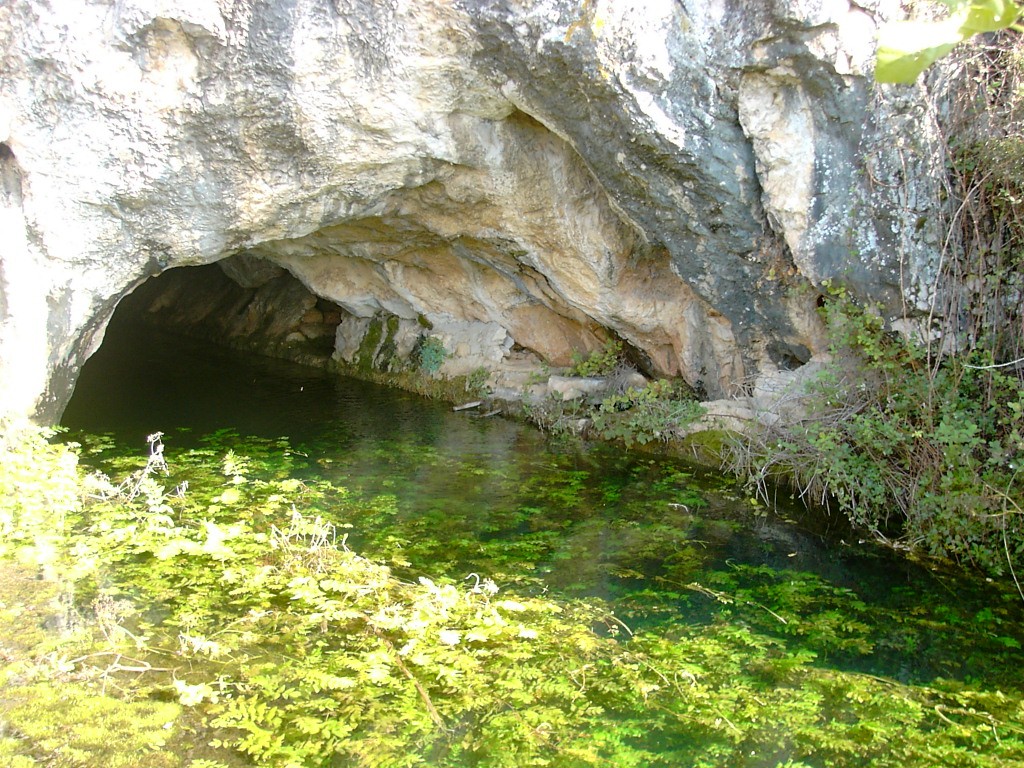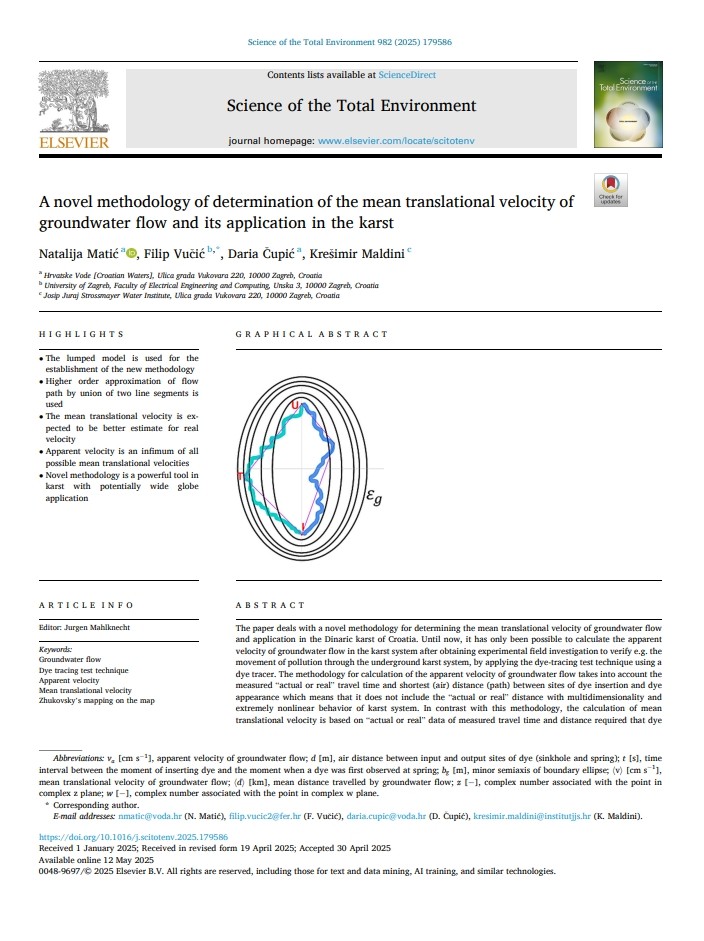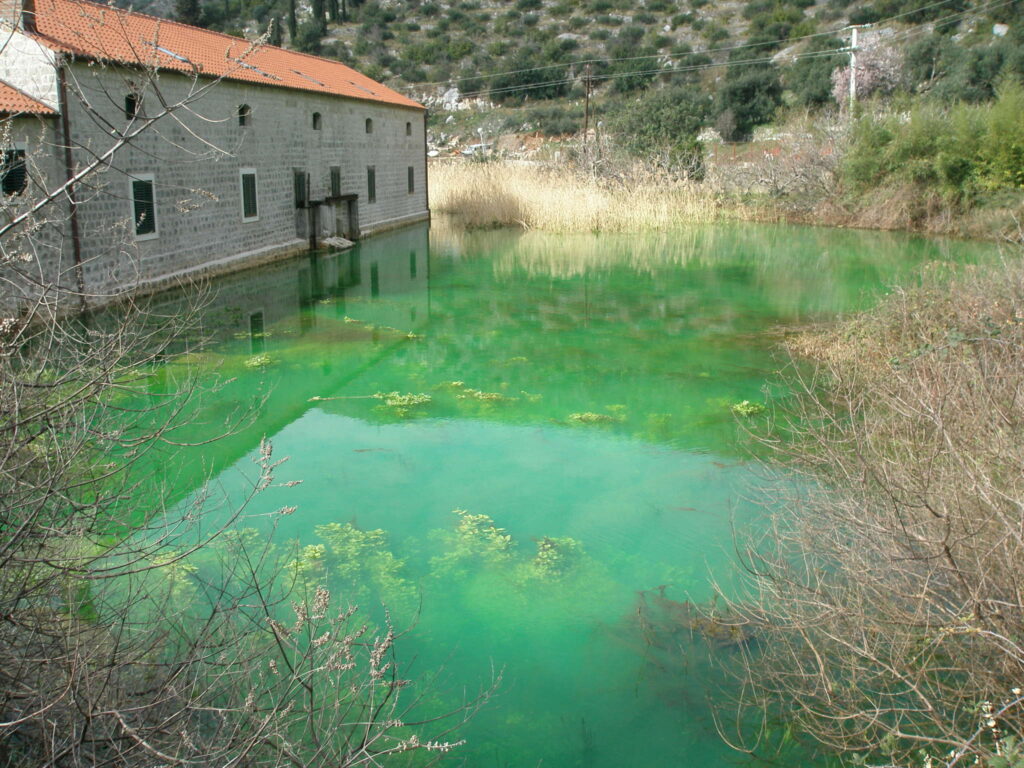Innovative method for calculating the flow velocity of groundwater


An original scientific paper entitled “A novel methodology of determination of the mean translational velocity of groundwater flow and its application in the karst” was published in the journal Science of The Total Environment by Elsevier in collaboration between representatives of the JJS Water Institute, Croatian Waters and the Faculty of Electrical Engineering and Computer Science at the University of Zagreb
Since it is important to determine a velocity that is as close as possible to the “actual” groundwater flow velocity, the paper discusses the possibility of determining the mean translational velocity on the basis of theoretical calculations and improving the existing method of calculating the apparent velocity of groundwater flow.
The special feature of this study is that it focuses on a novel methodology for determining the mean translational velocity of groundwater flow and its application in the Dinaric karst of Croatia. Previously, it was only possible to calculate the apparent groundwater flow velocity in karst systems after applying artificial dye tracking techniques, which are often used to monitor the movement of contaminants through subsurface karst systems.
Under the existing methodology, the apparent groundwater flow velocity is calculated based on the measured “actual” travel time of the dye and the shortest (straight-line) distance between the injection and detection points, which does not account for the actual spatial path or the multi-dimensional and non-linear nature of the karst system.
In contrast, the new method calculates the mean translational velocity using the actual travel time data and the distance travelled by the dye before it reappears at the sources, taking into account both the minor and major semi-axis of the boundary ellipse. This mathematically presented novel method integrates measured travel time data and environmental properties, making it both innovative and sustainable.

